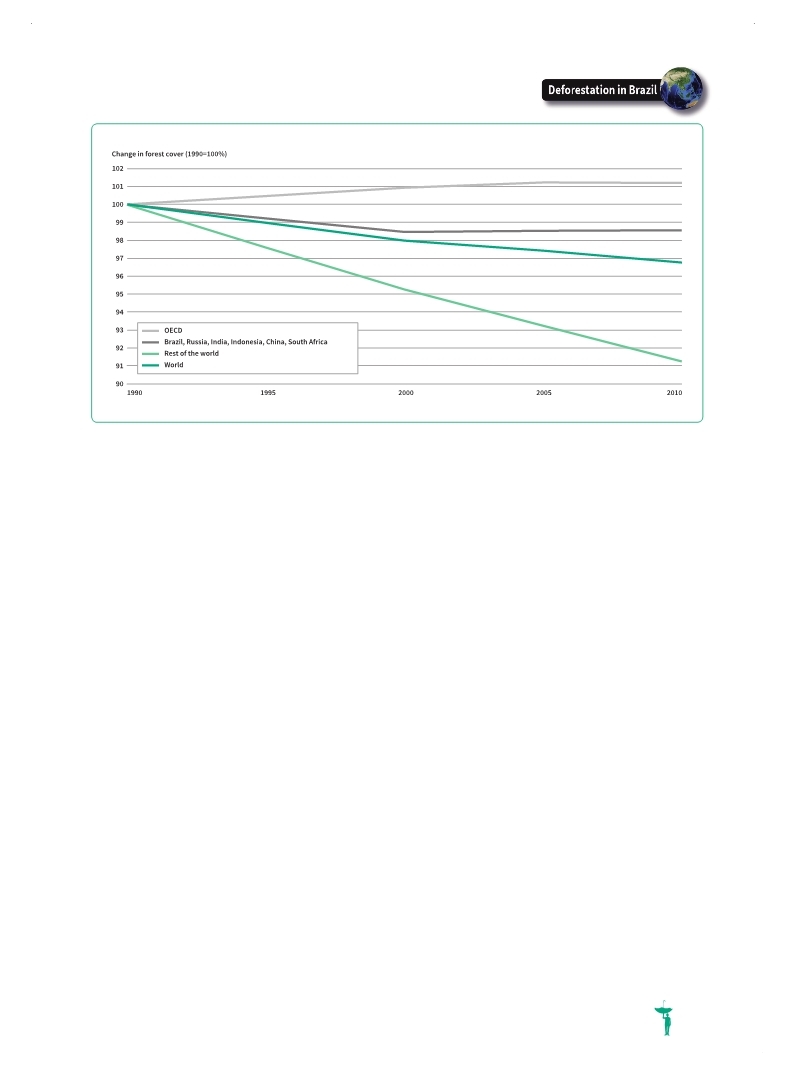 |
Global Assessment Report on Disaster Risk Reduction 2015
Making development sustainable: The future of disaster risk management |
 |
Global Assessment Report on Disaster Risk Reduction 2015
Making development sustainable: The future of disaster risk management |
|
|

233
One underlying driver of disaster risk is the loss of biodiversity, including the loss of forests (both in terms of size and diversity), wetlands, coral reefs, mangroves, areas under sustainable management and protected areas, the loss of threatened species and marine stocks, and the degradation of regulatory and provisioning ecosystem services (IPCC, 2012
IPCC (Intergovernmental Panel on Climate Change). 2012,Managing the Risks of Extreme Events and Disasters to Advance Climate Change Adaptation, Full Report. (Field, C.B., V. Barros, T.F. Stocker, D. Qin, D.J. Dokken, K.L. Ebi, M.D. Mastrandrea, K.J. Mach, G.-K. Plattner, S.K. Al-len, M. Tignor and P.M. Midgley, eds.). A Special Report of Working Groups I and II of the Inter-governmental Panel on. . UNISDR. 2009a,Global Assessment Report on Disaster Risk Reduction: Risk and Poverty in a Changing Climate, Geneva, Switzerland: UNISDR.. . World Bank. 2013,Building Resilience: Integrating Climate and Disaster Risk into Development, The World Bank Group Experience. The World Bank, Washington, D.C.. . IPCC (Intergovernmental Panel on Climate Change). 2014,Climate Change 2014: Impacts, Adaptation, and Vulnerability, Working Group II. Cambridge and New York: Cambridge University Press.. .  PEDRR, 2010 PEDRR, 2010 PEDRR (Partnership for Environment and Disaster Risk Reduction). 2010,Demonstrating the Role of Ecosystems-based Management for Disaster Risk Reduction, Background Paper prepared for the 2011 Global Assessment Report on Disaster Risk Reduction. Geneva, Switzerland: UNISDR.. PEDRR (Partnership for Environment and Disaster Risk Reduction). 2010,Demonstrating the Role of Ecosystems-based Management for Disaster Risk Reduction, Background Paper prepared for the 2011 Global Assessment Report on Disaster Risk Reduction. Geneva, Switzerland: UNISDR.. Click here to view this GAR paper.  Chatenoux and Peduzzi, 2013 Chatenoux and Peduzzi, 2013 Chatenoux, B. and P. Peduzzi. 2013,Biomass fires: preliminary estimation of ecosystems global economic losses, Background Paper prepared for the 2013 Global Assessment Report on Disaster Risk Reduction. Geneva, Switzerland: UNISDR.. Chatenoux, B. and P. Peduzzi. 2013,Biomass fires: preliminary estimation of ecosystems global economic losses, Background Paper prepared for the 2013 Global Assessment Report on Disaster Risk Reduction. Geneva, Switzerland: UNISDR.. Click here to view this GAR paper. Forest cover reduces landslide and drought risk in particular (UNISDR, 2011a
UNISDR. 2011a,Global Assessment Report on Disaster Risk Reduction: Revealing Risk, Redefining Development, Geneva, Switzerland: UNISDR.. . Global data on the loss of critical regulatory ecosystem services, including forests, mangroves, wetlands, coral reefs and aquifers, as well as data on climate change highlight that many ecosystems are now approaching tipping points beyond which recovery is difficult or impossible, with unpredictable but potentially dangerous implications for future disaster risk.
The impact of water scarcity has also been discussed extensively (UNISDR, 2013a
UNISDR. 2013a,Global Assessment Report on Disaster Risk Reduction: From Shared Risk to Shared Value: the Business Case for Disaster Risk Reduction, Geneva, Switzerland: UNISDR.. .  Erian et al., 2012 Erian et al., 2012 Erian, W., B. Katlan, B. Ouldbedy, H. Awad, E. Zaghtity and S. Ibrahim. 2012,Agriculture Drought in Africa and Mediterranean, Background paper prepared for the 2013 Global Assessment Report on Disaster Risk Reduction. Geneva, Switzerland: UNISDR.. Erian, W., B. Katlan, B. Ouldbedy, H. Awad, E. Zaghtity and S. Ibrahim. 2012,Agriculture Drought in Africa and Mediterranean, Background paper prepared for the 2013 Global Assessment Report on Disaster Risk Reduction. Geneva, Switzerland: UNISDR.. Click here to view this GAR paper. IPCC (Intergovernmental Panel on Climate Change). 2012,Managing the Risks of Extreme Events and Disasters to Advance Climate Change Adaptation, Full Report. (Field, C.B., V. Barros, T.F. Stocker, D. Qin, D.J. Dokken, K.L. Ebi, M.D. Mastrandrea, K.J. Mach, G.-K. Plattner, S.K. Al-len, M. Tignor and P.M. Midgley, eds.). A Special Report of Working Groups I and II of the Inter-governmental Panel on. . Figure 12.3 Global trends in forest cover, 1990-2010
(Source: OECD, 2012
OECD (Organisation for Economic Co-operation and Development). 2012,OECD Environmental Outlook to 2050: The consequences of Inaction, Paris: OECD Publishing.. . |
 
Page 1Page 10Page 20Page 30Page 40Page 50Page 60Page 70Page 80Page 90Page 100Page 110Page 120Page 130Page 140Page 150Page 160Page 170Page 180Page 190Page 200Page 210Page 220Page 223Page 224Page 225Page 226Page 227Page 228Page 229Page 230Page 231Page 232Page 233Page 234->Page 235Page 236Page 237Page 238Page 239Page 240Page 241Page 242Page 243Page 244Page 245Page 246Page 247Page 250Page 260Page 270Page 280Page 290Page 300Page 310
|
|
 
|
 
|
